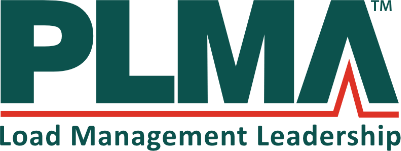Advanced Energy Job Opportunity: Engineering Co-Op Student (Summer 2022)
Advanced Energy is a non-profit planning, technical and engineering services firm whose vision is to ensure that energy is clean, affordable, reliable, efficient and safe for all people. We work with electric utilities, state, federal and local governments, manufacturers and a wide variety of public and private partners. We offer program design and implementation, consulting, training, testing and research to provide market-based energy-related solutions for our five markets: residential, commercial and industrial, motors and drives, solar and electric transportation.
We are committed to fostering, cultivating and preserving a culture of diversity and inclusion. Our staff is the most valuable resource we have and we appreciate that all of our employees come from varied backgrounds, cultures, and experiences. By providing a supportive and respectful environment that promotes creativity and collaboration, Advanced Energy continues to make a lasting, positive difference in all of the work we do.
Position Overview
Provides basic engineering services in the energy field to utilities, industrial customers, commercial customers, institutions, federal and state agencies, and other customers. The Motors and Drives Co-Op position is entry level and requires proficient skills in areas that use engineering judgement. Work products or processes will always have oversight from engineer or field technologist.
Essential Functions
Engineering Support
- Provide hands on assistance in laboratory setting utilizing various hand tools and power tools.
- Support product testing and safely operate laboratory dynamometers.
- Schedule laboratory testing based on incoming shipments and coordinate outgoing shipments including proper packaging.
- Support facility reviews and studies or site assessments to locate opportunities for improvements in productivity, quality and efficiency.
- Adjust desk heights and rearrange office furniture.
- Support quality control, recommend solutions, define and interpret the importance of the implementation of corrective measures.
- Support design reviews including load calculations, energy performance analysis or design documentation.
- Provide hands on assistance in deploying new technologies in the field.
- Assist in coordinating applied research studies on a national basis, consulting with other organizations and experts.
- Acquire data from field/lab instruments and process into useful information.
CLICK HERE to read the full job opportunity or to apply.
|
|
Advanced Energy Job Opportunity: Project Manager II
North Carolina Advanced Energy Corporation is a non-profit planning, technical and engineering services firm whose vision is to ensure that energy is clean, affordable, reliable, efficient and safe for all people. We work with electric utilities, state, federal and local governments, manufacturers and a wide variety of public and private partners. We offer program design and implementation, consulting, training, testing and research to provide market-based energy-related solutions for our five markets: residential, commercial and industrial, motors and drives, solar and electric transportation.
We are committed to fostering, cultivating and preserving a culture of diversity and inclusion. Our staff is the most valuable resource we have and we appreciate that all of our employees come from varied backgrounds, cultures, and experiences. By providing a supportive and respectful environment that promotes creativity and collaboration, North Carolina Advanced Energy Corporation continues to make a lasting, positive difference in all of the work we do.
If you have a passion for working in the energy industry and contributing to Advanced Energy's vision, we encourage you to apply for this position!
Position Overview
This position will provide project management support in the energy field to utilities, industrial, commercial and agricultural facilities, government agencies, and other customers. Plan, direct, and coordinate activities of projects to ensure that goals or objectives of projects are accomplished within time and funding parameters. Establish, track, and adhere to tasks, timelines, and budgets. Coordinate project logistics and resources. Research, summarize and write project reports. At Level II, the Project Manager is expected to independently manage smaller, less complex projects and/or provide project support to other Project Managers or technical leads. Individual has familiarity with subject matter in assigned business area.
Essential Functions
Project Management
- Develop and refine scope of work and take into account the client's needs, budget and other resources.
- Develop and implement project plans, including strategies, milestones and tasks.
- Design and facilitate project meetings and record minutes and action plans.
- Coordinate project logistics, including meetings, conference calls, presentations, workshops, client visits, travel, and events associated with assigned projects.
- Work with internal team and customer to define and update AE's role on projects.
- Establish, document, track, and adhere to project timelines, budgets, and tasks.
- Utilize applicable software applications to perform project management and scheduling tasks, and research issues with team members to resolve problems.
- Prepare project budgets, analyze variances, and initiate corrective actions.
- Develop technical tools and processes to more effectively complete tasks.
- Provide timely reports to funding sources, team, management, and others internally or externally.
- Assemble and manage the necessary work force to complete assigned activities.
- Manage and coordinate contracts and scopes of work for subcontractors and other external contacts.
- Analyze and create budget summaries and financial scenarios to improve project tracking and performance.
- Continuously search and strive for process improvement strategies.
CLICK HERE to read the full job opportunity or to apply.
|
Job Opportunity: Demand Response Project Manager
We are currently seeking a full-time Energy Programs Project Manager to join our Distributed Energy Resources (DERs) team. As a member of the DERs team, you will assist with driving customer participation in programs that incentivize the adoption of various DERs including; distributed solar, energy storage, demand response, microgrids, and electric vehicle grid integration. These leading-edge energy technologies are critical in driving our nation’s progress toward a decarbonized grid, and you will play a material role in helping our team make this future a reality.
This unique market opportunity, paired with Energy Solutions mission driven approach, creates a perfect environment for individuals who want to have an active voice in shaping the energy future in California and beyond.
Daily responsibilities include but are not limited to:
- Overall direction, management, quality control and completion of project deliverables
- Managing project budgets and tasks with minimal oversight
- Facilitating the progress of multiple projects and bringing them to conclusion
- Communicating project progress to management and clients
- Interacting with customers, clients, and external collaborators
- Conducting market research and data analysis
- Tracking of industry trends and other market changes that impact energy efficiency
- Organizing and facilitating in-person meetings and conference call
- Conducting literature searches
- A bachelor's degree with an energy focus, preference being towards engineering, environmental science or business
- A minimum of two years of work experience and/or graduate school
- Flexibility and adaptability in regard to project focus
- Demonstrated ability to conduct detailed technical and quantitative analysis
- Strong technical writing and verbal communication skills
- Strong organizational and project management skills
- Ability to interact professionally with clients and present in the primary role
- Extensive experience using Microsoft Office
- Ability to work and thrive independently
- Excellent personal accountability and quality control practices
- Willingness to conduct business travel
- Employees will be required to provide proof of COVID-19 vaccination and two weeks must have passed since the final dose has been received to work/visit from our offices
CLICK HERE to read the job description and apply.
|
Pennyrile Electric, Clark Public Utilities, and FPL earn top marks in Business Customer Satisfaction Study
We’re thrilled to announce the results of our 2021 Business Customer Satisfaction Study. We surveyed small and midsize business (SMB) customers to discover the utility attributes they value most as well as where their utility ranks on those attributes. The survey uses a 10-point scale, where 1 is the lowest score and 10 is the highest. Among seven attributes, SMB customers selected four as most important for a utility to possess:
- Energy reliability
- Trustworthiness
- Keeping energy prices down
- Effective emergency communications
E Source Market Research conducts the annual Business Customer Satisfaction Study to provide utilities and account representatives with direct feedback from customers. The survey produces an understanding of the overall satisfaction levels and identifies where improvement is essential. Over 2,000 SMB customers participated in the seventh edition of the study, which revealed the top-ranked utilities in 2021.
Of the participating utilities, Pennyrile Electric earned the top spot by receiving a score of 9.00 out of 10 for overall customer satisfaction and perceived value. Pennyrile Electric also scored highest for providing reliable energy, trustworthiness, and effective communication during energy emergencies. In addition, the utility’s account reps earned the highest scores for all attributes in the study.
CLICK HERE to read the press release.
|
Hawaiian Electric Company RFP for Direct Load Control Solution
PROCUREMENT OF DIRECT LOAD CONTROL DEVICE, INSTALLATION, AND ADMINISTRATION TO REPLACE EXISTING WATER HEATER DEMAND RESPONSE TECHNOLOGY -RFP 012822-01 Request for Proposal is being issued today November 22, 2021 and is currently open for proposals through January 28, 2022, 6:00 pm HST.
You can find the RFP here on the Company’s Demand Response website: Demand Response | Hawaiian Electric
Hawaiian Electric Company (“Company”) seeks proposals for a Direct Load Control solution for the replacement of the current existing water heater demand response technology.
The RFP seeks the following:
- DLC device that modulate or turn on and off power to a water heater(s) in residential and smaller commercial units, and secondarily a DLC device to control residential and small business central A/C and/or split A/C systems from the same Proposer of DLC device for water heaters.
- A head system to control, monitor, aggregate, and forecast load reduction of the DLC devices and associated resources, including DLC device provisioning, tracking, and monitoring.
- An administrator to perform removal of existing equipment and installation and provisioning of the DLC device, including scheduling these activities with participants, disposal of existing equipment, and to provide ongoing program maintenance.
The DLC devices will be installed as a replacement to the existing water heater control device for RDLC program. The RDLC program that has approximately 30,000 water heater devices currently enrolled into the program. Secondarily, the Company is seeking a DLC device to control residential and small business central A/C and/or split A/C systems from the same Proposer of DLC device for water heaters. Any offer for a DLC device to control A/C systems must also include a DLC device for water heaters.
The Company intends to use its General Services Master Agreement (“GSMA”) to procure the services described above. Proposers may submit proposals for a one, a combination, or all three of the components sought under this RFP (see Attachment B). Each successful Proposer(s) will provide the specified services pursuant to the terms of the GSMA to be negotiated between the Company and Proposer(s).
In order to submit a proposal, Proposers must register as a “Supplier” in Power Advocate’s Sourcing Intelligence to access the RFP event. For more information regarding registration for Power Advocate, please see Attachment A in the RFP.
After successful registration as a “Supplier” within Power Advocate, please request access to the RFP event from the Company via email [email protected]. Include your username & company information in the email. After the Company has added you to the event, you will receive an invitation to the RFP event at the registered Email account. Note: If you had previously registered and already have access to Power Advocate you will still need to send your information via the Company email to get an invitation to participate in the bid event.
Once you have access to the bid event you will be able to access all the submission documentation and are able to send messages through the Power Advocate platform. All communication for the RFP process shall be through Power Advocate.
Questions for the RFP are due by December 6, 2021 through Power Advocate. The Company’s response for those questions will then be sent through Power Advocate by December 14, 2021.
CLICK HERE to read the RFP and to apply.
|
|
|





